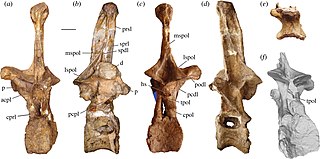
Jackson County is a county located in the southwestern corner of the U.S. state of Oklahoma. As of the 2020 census, the population was 24,785. Its county seat is Altus. According to the Encyclopedia of Oklahoma History and Culture, the county was named for two historical figures: President Andrew Jackson and Confederate General Stonewall Jackson. One source states that the county was named only for the former president, while an earlier source states it was named only for General Stonewall Jackson.

Altus is a city in Franklin County, Arkansas, United States. Located within the Arkansas River Valley at the edge of the Ozark Mountains, the city is within the Fort Smith metropolitan area. The epicenter of the Altus American Viticultural Area (AVA) within Arkansas Wine Country, the city is home to four wineries. Although founded as a coal mining community, the wine industry has driven the Altus economy since the first vineyards were planted in 1872. The population was 758 at the 2010 census, down from 817 at the 2000 census. In 2020, the population was 669 and was estimated as unchanged in 2021 and 2022.

Altus is a city in and the county seat of Jackson County, Oklahoma, United States. The population was 18,729 at the 2020 census.

Altus Air Force Base is a United States Air Force base located approximately 4 miles (6.4 km) east-northeast of Altus, Oklahoma.

Hesperornis is a genus of cormorant-like Ornithuran that spanned throughout the Campanian age, and possibly even up to the early Maastrichtian age, of the Late Cretaceous period. One of the lesser-known discoveries of the paleontologist O. C. Marsh in the late 19th century Bone Wars, it was an early find in the history of avian paleontology. Locations for Hesperornis fossils include the Late Cretaceous marine limestones from Kansas and the marine shales from Canada. Nine species are recognised, eight of which have been recovered from rocks in North America and one from Russia.

Dryosaurus is a genus of an ornithopod dinosaur that lived in the Late Jurassic period. It was an iguanodont. Fossils have been found in the western United States and were first discovered in the late 19th century. Valdosaurus canaliculatus and Dysalotosaurus lettowvorbecki were both formerly considered to represent species of Dryosaurus.

Struthiomimus, meaning "ostrich-mimic", is a genus of ornithomimid dinosaurs from the late Cretaceous of North America. Ornithomimids were long-legged, bipedal, ostrich-like dinosaurs with toothless beaks. The type species, Struthiomimus altus, is one of the more common, smaller dinosaurs found in Dinosaur Provincial Park; their overall abundance—in addition to their toothless beak—suggests that these animals were mainly herbivorous or omnivorous, rather than purely carnivorous. Similar to the modern extant ostriches, emus, and rheas, ornithomimid dinosaurs likely lived as opportunistic omnivores, supplementing a largely plant-based diet with a variety of small mammals, reptiles, amphibians, insects, invertebrates, and anything else they could fit into their mouth, as they foraged.

Aepycamelus is an extinct genus of camelids that lived during the Miocene 20.6–4.9 million years ago, existing for about 15.7 million years. Its name is derived from the Homeric Greek αἰπύς, "high and steep" and κάμηλος – "camel"; thus, "high camel"; alticamelus in Latin.

Astrodon is a genus of large herbivorous sauropod dinosaur, measuring 20 m (66 ft) in length, 9 m (30 ft) in height and 20 metric tons in body mass. It lived in what is now the eastern United States during the Early Cretaceous period, and fossils have been found in the Arundel Formation, which has been dated through palynomorphs to the Albian about 112 to 110 million years ago.

Lake Altus-Lugert, also known as Lake Altus, Lake Lugert, Lake Lugert-Altus, and Lugert Lake, is a reservoir located on the North Fork Red River, about 17 miles (27 km) north of Altus, Oklahoma on the former site of the town of Lugert, Oklahoma. The river is the boundary between Greer County and Kiowa County, Oklahoma. The lake is used for fishing, boating, swimming, and irrigation. This is also the principal water supply for Altus.

Southwest Oklahoma is a geographical name for the southwest portion of the state of Oklahoma, typically considered to be south of the Canadian River, extending eastward from the Texas border to a line roughly from Weatherford, to Anadarko, to Duncan. Geologically, the region is defined by a failed continental rift known as the Southern Oklahoma Aulacogen. The austere nature of the prairie landscape with intermittent island ranges has made it a favorable place for artists and photographers alike. For tourism purposes, the Oklahoma Tourism and Recreation Department has designated Southwestern Oklahoma as Great Plains Country, and defined it to consist of 14 counties including Roger Mills, Custer, Beckham, Washita, Caddo, Kiowa, Greer, Harmon, Jackson, Comanche, Tillman, Cotton, Stephens, and Jefferson counties.

The Quartz Mountains are an extension of the Wichita Mountains in the far southwestern part of the state of Oklahoma. According to the Encyclopedia of Oklahoma History and Culture, the range was originally formed about 550 million years ago as a "failed continental rift". It was uplifted about 300 million years ago and has since weathered into its current condition. The unique geography provides cover for the most northerly natural population of the Texas live oak, quercus fusiformis. This rare oak is generally regarded as the most cold hardy evergreen oak.

Adventure was an American pulp magazine that was first published in November 1910 by the Ridgway company, a subsidiary of the Butterick Publishing Company. Adventure went on to become one of the most profitable and critically acclaimed of all the American pulp magazines. The magazine had 881 issues. Its first editor was Trumbull White. He was succeeded in 1912 by Arthur Sullivant Hoffman (1876–1966), who edited the magazine until 1927.

Amphicoelias is a genus of herbivorous sauropod dinosaur that lived approximately 150 million years ago during the Tithonian of what is now Colorado, United States. Amphicoelias was moderately sized at about 18 metres (59 ft) in length and 15 metric tons in body mass, shorter than its close relative Diplodocus. Its hindlimbs were very long and thin, and its forelimbs were proportionally longer than in relatives.

U.S. Route 64 is a U.S. highway running from Teec Nos Pos, Arizona east to Nags Head, North Carolina. In the U.S. state of Arkansas, the route runs 246.35 miles (396.46 km) from the Oklahoma border in Fort Smith east to the Tennessee border in Memphis. The route passes through several cities and towns, including Fort Smith, Clarksville, Russellville, Conway, Searcy, and West Memphis. US 64 runs parallel to Interstate 40 until Conway, when I-40 takes a more southerly route.

Persona 4 Arena is a fighting video game co-developed by P-Studio and Arc System Works and published by Atlus for arcades, PlayStation 3, and Xbox 360; the game is a spin-off from the Persona series, itself part of the larger Megami Tensei franchise. The game was published by Atlus in Japan and North America in 2012, and by Zen United in Europe in 2013. Gameplay follows standard fighting game conventions, with matches between two characters with individual movesets, and special expendable abilities. The storyline is told through visual novel segments.
Altus-Denning School District No. 31 was a school district in Arkansas, serving Altus and Denning. It operated one school, the Altus-Denning School.
Derallus is a genus of water scavenger beetles in the family Hydrophilidae. There are about six described species in Derallus.

Altus Group Limited is a provider of asset and fund intelligence for commercial real estate. The company is headquartered in Toronto, Canada and employs approximately 2,800 employees with operations in North America, Europe and Asia Pacific. It is a public company, with its shares listed on the Toronto Stock Exchange under the symbol AIF, and Altus Group's market capitalization was around $2.7 billion as of the end of 2022. For fiscal 2022, the company had annual revenues of C$735 million and C$135 million in adjusted EBITDA.
















